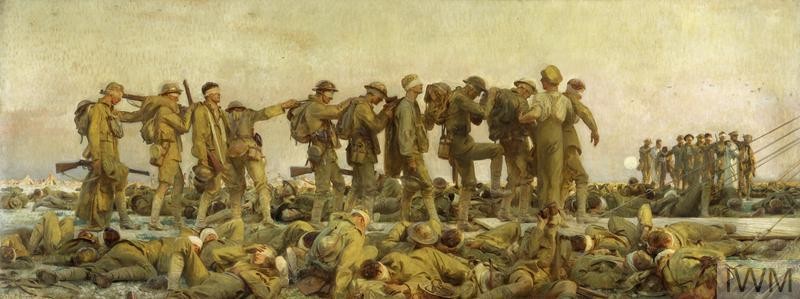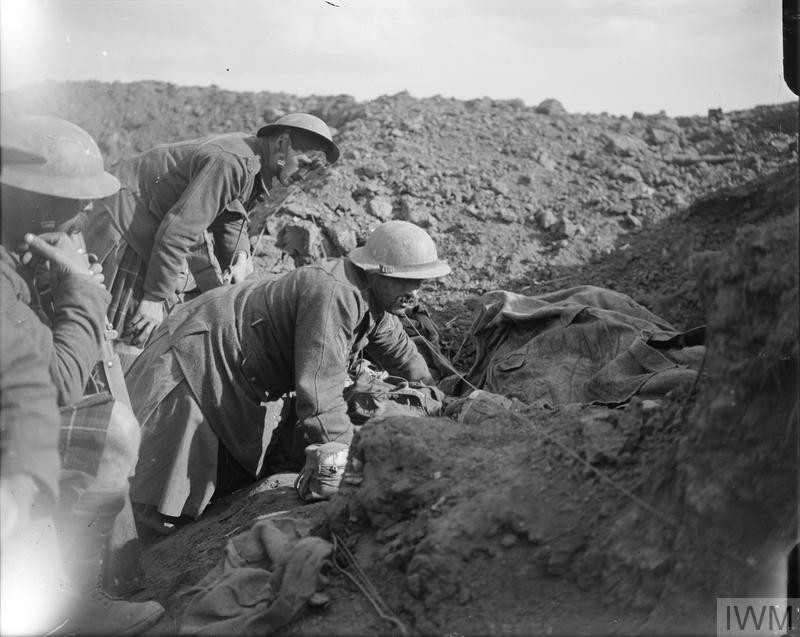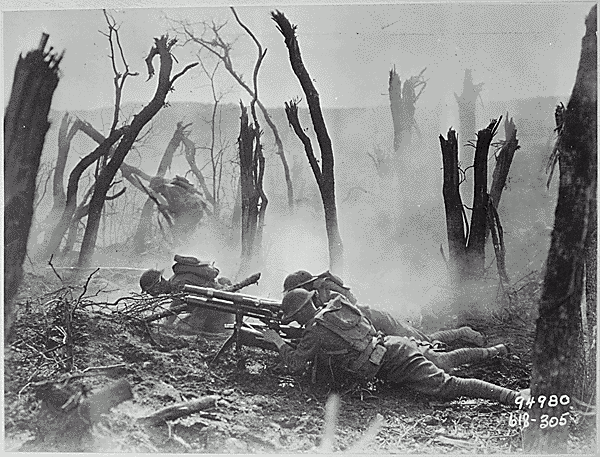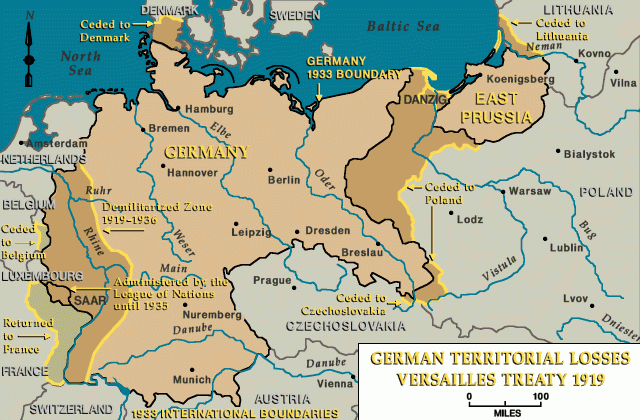
World War I and its Aftermath: Key Dates
World War I (1914–18) was the first great international conflict of the twentieth century. After almost 100 years of relative peace, the major European nations went into a war that left millions dead, empires toppled, and a continent devastated. The conflict and its divisive peace left a legacy that helped give rise to totalitarian ideologies, like Communism, Fascism, and Nazism, and paved the way for World War II and the Holocaust. Explore some key dates.
Key Facts
-
1
World War I led to the deaths of millions of soldiers and civilians. Nearly ten million soldiers died in the fighting, far exceeding military deaths in all the wars of the previous 100 years combined. Millions of civilians also suffered. Many died from starvation, disease, mass deportations, and genocide.
-
2
During World War I, the belligerent powers made use of the significant advances in the technology of killing, including aircraft, tanks, and the first use of poison gas as a weapon of war.
-
3
The mass death and sense of loss caused by the war left an important and lasting cultural legacy in Europe and the United States.
The Outbreak of War
Archduke Franz Ferdinand was in the line of succession to the Austro-Hungarian throne when he and his wife Sophie were assassinated on June 28, 1914, in Sarajevo. Members of a Serbian nationalist group carried out the assassination. The subsequent international crisis led to the outbreak of World War I.
Following the assassination, the Austro-Hungarian Empire, supported by the German government, issued an ultimatum demanding among other things that Serbia cease all activities against Austria-Hungary. The Serbs, with Russian backing, refused the empire's demands. In response, Austria-Hungary declared war against Serbia on July 28. Russia entered the conflict on Serbia's side. Germany declared war first on Russia, then on France, who was militarily allied with Russia. The German offensive quickly violated Belgian neutrality, and the British declared war on August 4, 1914.
Within six weeks of the assassination, Europe was at war.
This timeline describes some key events related to World War I and its aftermath.
August 26–30, 1914: The Battle of Tannenberg
The Battle of Tannenberg fought between Russia and Germany, was one of the first battles of the war and the first major battle won by Germany on the Eastern Front. It resulted in the near complete destruction of the Russian Second Army. The victory at Tannenberg brought considerable prestige to Field Marshal Paul von Hindenburg and his staff-officer Erich Ludendorff, who would play prominent roles in Germany in the years to come.
Spring 1915: Bryce Report—Committee on Alleged German Outrages
When the German army invaded Belgium in 1914, the advancing German military killed approximately 6,000 Belgian civilians. Reports of these “Belgian atrocities” sparked international outrage. A British commission documented these atrocities in a highly publicized and inflammatory report.
After World War I, people realized that many of the stories had been greatly exaggerated and sometimes fabricated, which sparked scepticism about later atrocity stories. Consequently, as the first reports of Nazi atrocities began to emerge at the outbreak of World War II, many people discounted the information, based on experiences with the Belgian atrocities.
April 22, 1915–May 25, 1915: Chlorine Gas Attack at the Second Battle of Ypres
The Second Battle of Ypres was fought between the German Army and the British, French, and Belgian militaries for control of the Belgian town of Ypres. The battle resulted in approximately 70,000 Allied casualties and 35,000 German casualties, but neither side won a clear victory for control of the town. This battle was the first instance in which the German military used lethal poison gas on the Western Front, an act which violated the 1899 and 1907 Hague Conventions.
There were many artistic responses to the horrors of war. Wilfred Owen, one of the best-known poets of the war, later described a gas attack in his poem “Dulce et Decorum Est.”

December 8, 1915: Publication of "In Flanders Fields"
Written by Canadian John McCrae, “In Flanders Fields” is one of the most famous poems from World War I. Written from the perspective of the men who died at Ypres, the poem helped turn the poppy, which was one of the few flowers that grew in the devastated soil on the Belgian battlefield, into a commemorative symbol of World War I.
February 21–December 18, 1916: Battle of Verdun
The Battle of Verdun was one of the longest and deadliest battles of the war. The German Army attempted an offensive near the French city of Verdun that quickly devolved into a stalemate. German forces were subsequently diverted from Verdun when the British launched the Battle of the Somme, and the Battle of Verdun ended in December when the French recaptured initial German gains. About 300,000 soldiers were killed, with many more wounded.
May 16, 1916: Sykes-Picot Agreement
The Sykes-Picot Agreement was a secret agreement between Britain and France, with the consent of Russia. The Agreement divided the Ottoman Empire into French, British, and Russian spheres of influence, which had long-term repercussions for the Middle East.

July–November 1916: Battle of the Somme
The Battle of the Somme in France was an Allied offensive against the Germans. The first day was the deadliest day of fighting in British history, as the British lost 20,000 troops (with another 37,000 wounded). The battle became a symbol of senseless death and the futility of war.
Spring 1915–Autumn 1916: Armenia
Under the cover of war, the Ottoman government perpetrated a genocide against the Armenian Christian minority. Between the spring of 1915 and the autumn of 1916, the Ottomans killed between 664,000 and 1.2 million Armenians of the estimated 1.5 million Armenians living in the Ottoman Empire. Rulers of the Ottoman government ordered mass shootings that killed hundreds of thousands of Armenians. Others died from the effects of deportation into the desert – starvation, exposure, dehydration, and disease. Many Armenian children were forcibly removed from their families and converted to Islam.
1917: The Russian February Revolution
Russia’s problems at home reached the breaking point in 1917. After Tsar Nicholas II personally took over command of the Russian Army in September 1915, the military suffered heavy losses while the home front struggled with hunger and labor unrest. By early 1917, Nicholas had lost all support; following Russia’s February Revolution, the Tsar abdicated for himself and his young son. Nicholas was succeeded by a democratic government known as the Provisional Government. Under the leadership of Russian parliamentarian Alexander Kerensky, the Provisional Government was committed to honoring Russian agreements to continue the war.
April 6, 1917: United States Entry into World War I
The United States had remained neutral when World War I began. Americans generally favored the Allied cause but did not want to become involved in the war. However, the German policy of unrestricted submarine warfare – targeting all ships, whether passenger or military, neutral or combatant – resulted in the deaths of American citizens.
British Naval Intelligence intercepted a telegram from Germany’s Foreign Minister, Arthur Zimmermann, to Mexico, offering Mexico territory in the United States in exchange for Mexican help if America went to war against Germany. The decoded text of the telegram was turned over to the US Ambassador in London, and then sent to American President Woodrow Wilson. Using this information and Germany’s resumption of submarine warfare, Wilson went to Congress on April 2, requesting a declaration of war against Germany. Congress declared war several days later, on April 6, 1917.

1917: The Russian October Revolution
On November 6 and 7, 1917 (or October 24 and 25 on the old Julian calendar), leftist revolutionaries, led by Bolshevik Party leader Vladimir Lenin, launched a nearly bloodless coup against Kerensky’s government. This “October Revolution” swept the Bolsheviks and Lenin to power. The new Soviet government immediately removed Russia from the war, and in March 1918 signed the Treaty of Brest-Litovsk with Imperial Germany. With Russia out of the war, Germany no longer had to fight a two-front war and also gained a number of territorial concessions. Civil war between the Bolshevik Reds and their loosely allied opponents, the Whites, would rage from 1917 to 1922.
November 2, 1917: Balfour Declaration
The Balfour Declaration asserted that “His Majesty's government view with favour the establishment in Palestine of a national home for the Jewish people.” The declaration contradicted other Allied agreements concerning the postwar future of the region, such as the Sykes-Picot Agreement. Likewise, its ambiguous language would sow discord in the years to come.
January 8, 1918: Wilson’s Fourteen Points
American President Woodrow Wilson issued a set of principles to guide the postwar peace negotiations. These principles, known as the Fourteen Points, called for open covenants, freedom of the seas and of trade, reductions in armaments, settlement of colonial claims, the establishment of a “general association, or league, of nations,” and national self-determination. Wilson’s idealism appealed to the Central Powers, who now appeared certain to lose the war, and to ethnic minorities hoping to create national states.
March 8, 1918: First Report of Spanish Flu
In 1918, a new strain of the influenza virus emerged in the United States and led to a global pandemic. In May, American soldiers deployed to Europe and carried the flu virus overseas. About 500 million people worldwide contracted the flu, and 50 million people died. More American soldiers died from the flu than from combat in World War I.
November 11, 1918: Armistice
By 1918, the Central Powers began to collapse. On 9 November, 1918, the German monarchy was overthrown. A German delegation negotiated an armistice with the Allies, sparking the “stab-in-the-back” myth. According to this interpretation, Germany lost not due to military defeat, but because the country had been betrayed by the republican leaders on the home front who agreed to the armistice. The armistice was signed on the eleventh day of the eleventh month, at eleven minutes past the eleventh hour, bringing to an end the devastating fighting.
December 1, 1918: Kingdom of Yugoslavia formed
The Kingdom of Serbs, Croats, and Slovenes (renamed Yugoslavia in 1929) was formed on December 1, 1918. The new state included Serbia and Montenegro, two previously independent territories, as well as parts of the former Austro-Hungarian Empire, including Dalmatia, Croatia, Slovenia, and Bosnia and Herzegovina. Although Yugoslavia was intended to inspire a greater Serb nationalism, it was unsuccessful at creating a common national identity.
June 28, 1919: Treaty of Versailles
The Treaty of Versailles was signed in June 1919, following months of negotations at the Paris Peace Conference. The treaty was designed to ensure that Germany would never again pose a military threat to Britain or France. Its infamous “war guilt clause” held Germany responsible for the war. The treaty likewise stripped Germany of 25,000 square miles of territory and imposed onerous reparation payments. The Germans had expected a seat at the negotiating table based on Wilson’s Fourteen Points; instead, they were limited to bitter protest, referring to the Treaty as a "Diktat” (a decree imposed without consent).

April 25, 1919: Release of Abel Gance’s Film J’Accuse
The profound devastation of World War I inspired many artistic responses focused on the futility of war and senselessness of death. In the French film J’Accuse, the war dead rise up from their graves, wounded and maimed, to return to their villages to see if their sacrifices had been in vain. Filmmaker Abel Gance filmed these scenes in 1918 on actual battlefields, using French soldiers as actors. Many of these soldiers were subsequently killed in action before the war ended.
November 19, 1919/March 19, 1920: United States Senate Rejects Treaty of Versailles
Not all Americans shared the idealistic internationalism President Wilson outlined in the Fourteen Points. While Wilson saw the path to lasting peace in international cooperation, many Americans instead preferred isolationism, which asserted the US should have as little involvement in international affairs as possible. The US Senate twice rejected the Treaty of Versailles and membership in the League of Nations. Without American participation, the power and prestige of the League of Nations were greatly reduced.
1919: Founding of Weimar Republic
The German government, which ruled in the years between the collapse of Imperial Germany (1918) and the rise of Nazi Germany (1933), was known as the Weimar Republic. The Weimar Republic was the first democratic government Germany had experienced, and from the beginning it struggled to establish democratic norms amid the postwar upheaval, political violence, and economic disruptions of the period. At the same time, Weimar Germany also witnessed a cultural blossoming that coincided with a new era of social freedoms. However, the instability of the Weimar Republic ultimately contributed to Adolf Hitler’s rise to power.
August 27, 1928: Kellogg-Briand Pact
The Kellogg-Briand Pact was an international agreement signed by 65 nations that “renounced war as an instrument of national policy.” Following the devastation of World War I, the Kellogg-Briand Pact was intended to prevent war and mandate peace, reflecting just how scarring the experience of World War I had been. The US Senate ratified the treaty in January 1929, marking a cautious American re-entry back into international affairs.
1929: Publication of All Quiet on the Western Front
Erich Maria Remarque’s 1929 masterpiece All Quiet on the Western Front captures the experience of frontline troops and expressed the alienation of the “lost generation” who returned from war. These men found themselves unable to adapt to peacetime and tragically misunderstood by a home front population who had not seen the horrors of war firsthand. The book has been translated into 45 languages and millions of copies have been sold.
October 29, 1929: Stock Market Crash and the Great Depression
In October 1929, the American stock market crashed, setting off a global financial crisis known as the Great Depression. The worst years of the Depression were between 1929 and 1933, causing widespread unemployment and rampant deflation.
While no country was spared from the Depression, Germany was especially hard-hit. The German economy had only just begun to recover from the economic effects of World War I, the Versailles reparation payments, and the terrible hyperinflation of 1923, which wiped out the savings of ordinary Germans. Germany’s economic woes, coupled with the weakness and instability of the Weimar Republic, made the German public more receptive to political messages such as Hitler’s, in which he promised to reject the Versailles Treaty and return to German greatness.
Critical Thinking Questions
- How did conditions in Germany and Europe at the end of World War I contribute to the rise and triumph of Nazism in Germany?
- International agreements have a mixed record of success in terms of limiting or preventing dangerous behavior by individual nations. How can this be improved or changed?
- What difficulties does the government of a defeated nation face? At the conclusion of hostilities, what arrangements or support should be provided for the defeated nation?
- What obligations do the victors and the world community have to the defeated enemy, if any?

